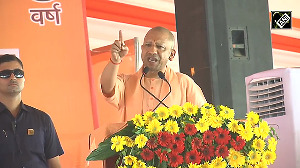24x7 power supply to farmers emerges as a political lightning rod in the state.

Amid the heated political battle for power in Telangana, the state's power sector and supply to farmers have become topics of discussion.
Before the assembly election season kicked in, Chief Minister Kalvakuntla Chandrashekar Rao (popularly known as KCR) claimed that Telangana is the only state in the country that provides 24x7 power to both domestic and commercial segments.
However, the Congress, through its state unit chief Anumula Revanth Reddy, later declared that he and other candidates would not contest the polls if KCR could prove the existence of a 24-hour power supply to the farm sector.
Responding to Reddy, Kalvakuntla Taraka Rama Rao, the working president of the Bharat Rashtra Samithi, on Friday dared the Congress leader to touch the power lines and check if the 24-hour supply is available or not.
When Business Standard checked the numbers, it seemed to support the BRS claim, either due to the overall improvement of the power sector in the state or due to the new-found push for renewable energy in Telangana.
'When the state was being formed, there were a lot of apprehensions and false propaganda against Telangana. Now, in the entire country, there is only one state that supplies 24x7 power to domestic, industrial, commercial, or agricultural,' the CM said.
According to official claims, the state has invested Rs 97,321 crore (Rs 973.21 billion) to expand and strengthen power generation, supply, and distribution systems in the past nine years.
At the time of Telangana's formation in 2014, there was a deficit of 2,700 megawatt (Mw) in electricity demand.
The state then had an installed capacity of only 9,470 Mw.
As of 2021-2022, the installed power capacity in Telangana is 18,069 Mw.
Of this, thermal energy constitutes more than half of the share (10,481 Mw).
Nearly 41 per cent of this is sourced from renewable energy (7,439 Mw), and nuclear energy accounts for about 1 per cent (149 Mw).
This further increased to 18,793 Mw as of October 2023.
"There is a mix of reasons, including the addition of renewable capacity after 2014. More than that, a lot of new thermal facilities were added by state-generation companies. It is a combination of solar and thermal. The pace of power sector reforms was faster in Telangana compared to other states," said Vikram Reddy V, vice-president and sector head, corporate ratings, ICRA.
Between 2014-2015 and 2021-2022, the state experienced an increase of 91 per cent in installed capacity, with a compound annual growth rate (CAGR) of 9.67 per cent.
The CAGR of Telangana was nearly double the national average (5.66 per cent) during this period.
"Three new thermal plants were added, in addition to the private sector push in the solar segment. Moreover, a city like Hyderabad, which contributes around 45 per cent of the state's revenue, is free of power cuts now," said Rama Krishna Sangem, a veteran journalist and political analyst.
The three power plants include the Kothagudem thermal power station (Stage II) at Paloncha (800 Mw), the Bhadradri thermal power station at Manuguru (1,080 Mw), and the Yadadri thermal power station at Damercherla (5x800 Mw).
At the time of its formation in June 2014, the state had a peak demand deficit of 2,700 Mw, leading to load relief of four to eight hours for households and other categories.
"Industries had to contend with two weekly power holidays, and the agriculture sector experienced irregular four- to six-hour electricity supply, resulting in crop failures and farmer suicides," an industry expert recalled.
"Limited electricity supply to the agriculture sector during night hours led to accidents and snake bites. However, the government of Telangana implemented persistent and systematic interventions, leading to a transformation in the power sector over eight years," the expert added.
"Telangana stands as the only state providing 24x7 free power to 2.696 million agricultural consumers. To facilitate this, the government allocated Rs 49,314 crore (Rs 493.14 billion) as a subsidy towards free power supply to the agriculture sector from 2014-2015 to 2021-2022," the expert pointed out
With the construction of power-generating stations, substations, and supply lines, Telangana has made significant progress, boasting an average per capita electricity consumption of 2,140 units.
This surpasses the national average of 1,255 units by 70 per cent.
Experts highlight that, owing to a national-level push, other South Indian states have experienced significant changes in the power sector.
"Andhra Pradesh was around 11,000 Mw, which has now increased to around 26,000 Mw. Karnataka, which had an initial capacity of 15,800 Mw, has risen to 32,000 Mw, with a substantial portion coming from renewable sources, increasing from around 5,000 Mw in March 2015 to approximately 16,000 Mw now. Thermal energy saw more additions in Andhra Pradesh and Telangana," added Reddy of ICRA.
Amid claims and counterclaims by the BRS and the Congress, the upcoming elections are evolving into a high-voltage battle.

Feature Presentation: Aslam Hunani/Rediff.com












 © 2025
© 2025